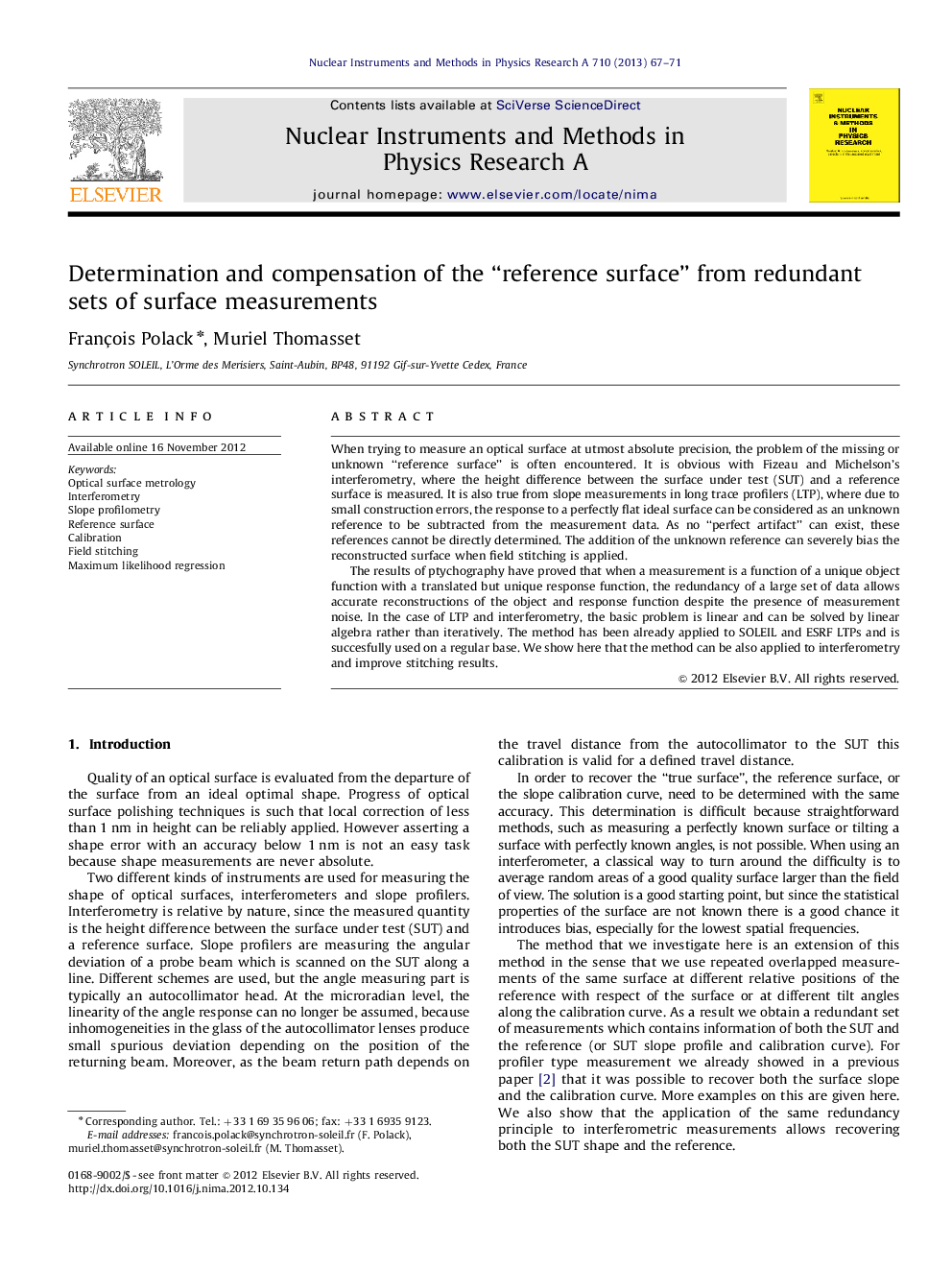| Article ID | Journal | Published Year | Pages | File Type |
|---|---|---|---|---|
| 1823179 | Nuclear Instruments and Methods in Physics Research Section A: Accelerators, Spectrometers, Detectors and Associated Equipment | 2013 | 5 Pages |
When trying to measure an optical surface at utmost absolute precision, the problem of the missing or unknown “reference surface” is often encountered. It is obvious with Fizeau and Michelson's interferometry, where the height difference between the surface under test (SUT) and a reference surface is measured. It is also true from slope measurements in long trace profilers (LTP), where due to small construction errors, the response to a perfectly flat ideal surface can be considered as an unknown reference to be subtracted from the measurement data. As no “perfect artifact” can exist, these references cannot be directly determined. The addition of the unknown reference can severely bias the reconstructed surface when field stitching is applied.The results of ptychography have proved that when a measurement is a function of a unique object function with a translated but unique response function, the redundancy of a large set of data allows accurate reconstructions of the object and response function despite the presence of measurement noise. In the case of LTP and interferometry, the basic problem is linear and can be solved by linear algebra rather than iteratively. The method has been already applied to SOLEIL and ESRF LTPs and is succesfully used on a regular base. We show here that the method can be also applied to interferometry and improve stitching results.
